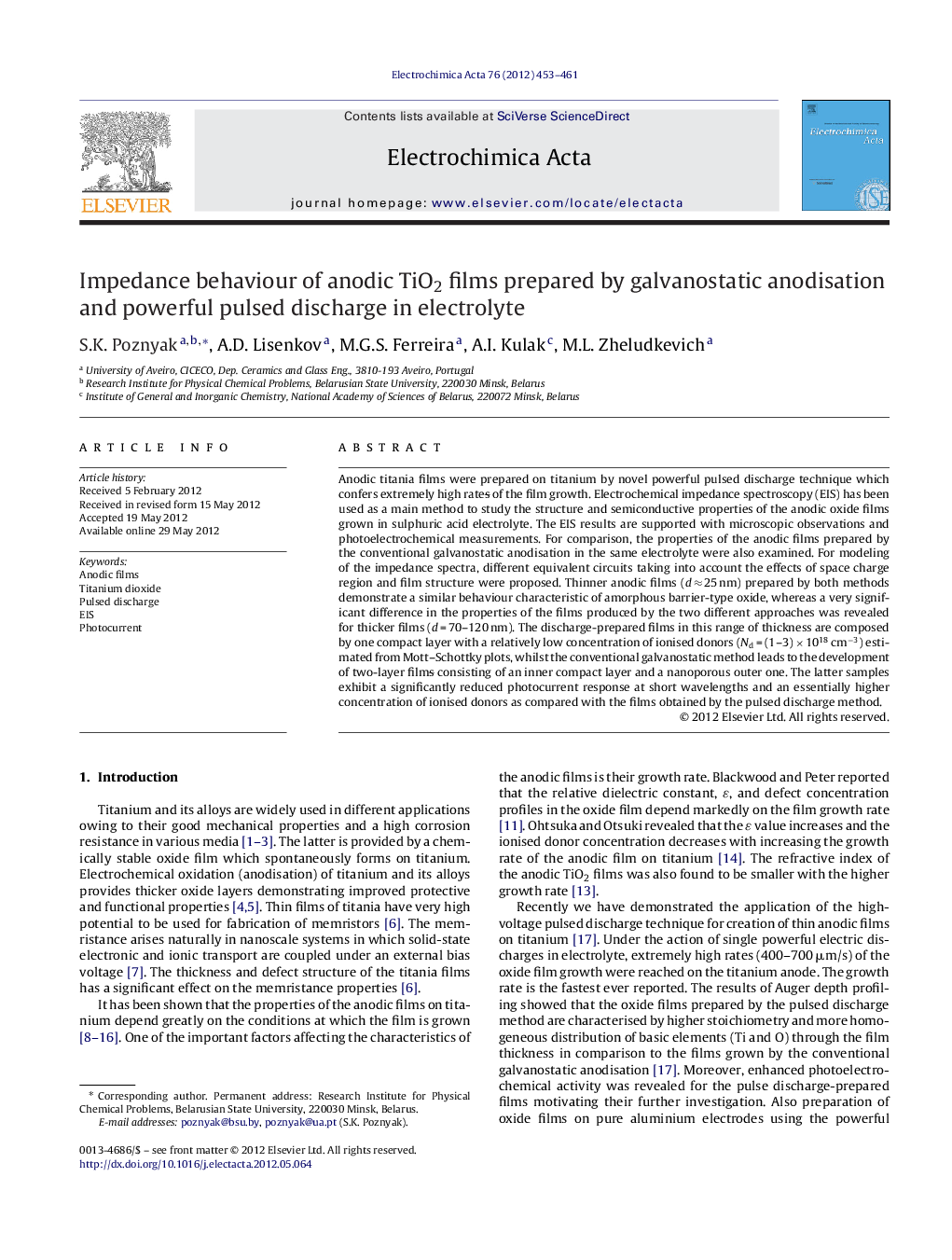| Article ID | Journal | Published Year | Pages | File Type |
|---|---|---|---|---|
| 188238 | Electrochimica Acta | 2012 | 9 Pages |
Anodic titania films were prepared on titanium by novel powerful pulsed discharge technique which confers extremely high rates of the film growth. Electrochemical impedance spectroscopy (EIS) has been used as a main method to study the structure and semiconductive properties of the anodic oxide films grown in sulphuric acid electrolyte. The EIS results are supported with microscopic observations and photoelectrochemical measurements. For comparison, the properties of the anodic films prepared by the conventional galvanostatic anodisation in the same electrolyte were also examined. For modeling of the impedance spectra, different equivalent circuits taking into account the effects of space charge region and film structure were proposed. Thinner anodic films (d ≈ 25 nm) prepared by both methods demonstrate a similar behaviour characteristic of amorphous barrier-type oxide, whereas a very significant difference in the properties of the films produced by the two different approaches was revealed for thicker films (d = 70–120 nm). The discharge-prepared films in this range of thickness are composed by one compact layer with a relatively low concentration of ionised donors (Nd = (1–3) × 1018 cm−3) estimated from Mott–Schottky plots, whilst the conventional galvanostatic method leads to the development of two-layer films consisting of an inner compact layer and a nanoporous outer one. The latter samples exhibit a significantly reduced photocurrent response at short wavelengths and an essentially higher concentration of ionised donors as compared with the films obtained by the pulsed discharge method.
► New pulsed discharge technique offers extremely high rates of oxide film growth in electrolytes. ► This technique leads to the formation of single-layer compact anodic TiO2 films. ► Discharge-prepared thin anodic films on Ti have significantly lower defectiveness.
